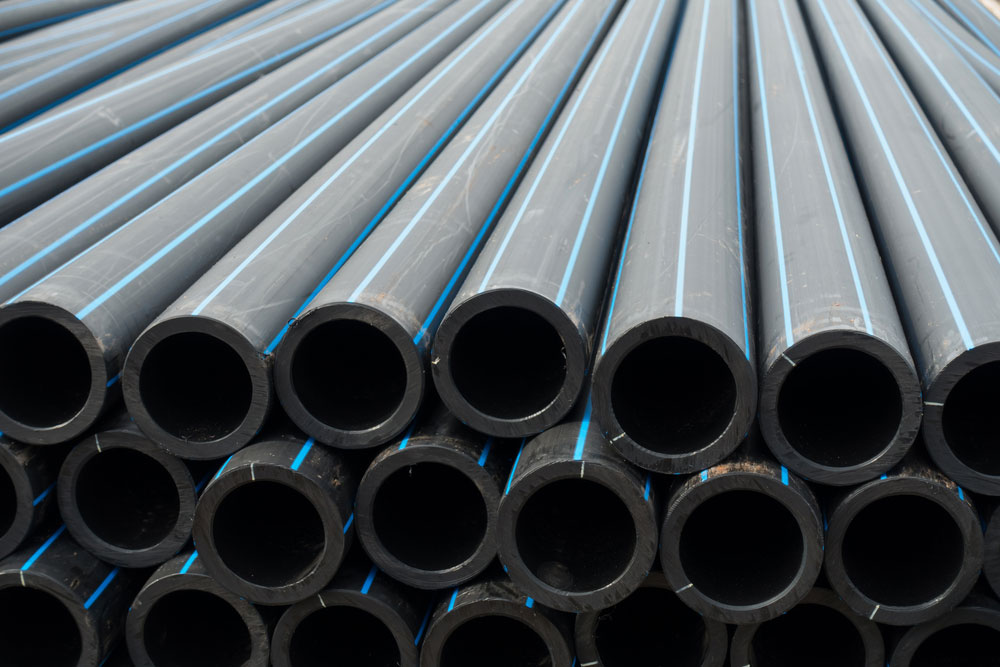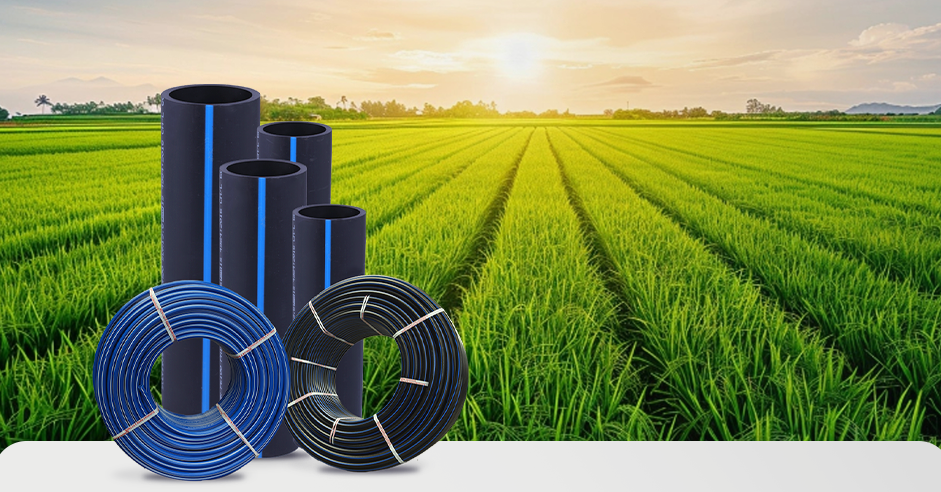The Vital Actions for Successful Installation of HDPE Pipe in Your Next Task
Successful setup of HDPE pipeline requires careful preparation and execution. Secret actions consist of assessing task requirements, preparing the site, and picking proper joining strategies. Each phase plays an essential role in making certain the integrity and efficiency of the pipe. Understanding these crucial steps can considerably influence the general success of the task - American Plastics HDPE Pipe for Oilfield. The nuances of each action might hold the secret to getting over common challenges encountered throughout installment.
Understanding the Conveniences of HDPE Pipe
High-density polyethylene (HDPE) pipeline provides countless advantages that make it a preferred selection for different applications. Its high resistance to corrosion and chemicals warranties longevity sought after settings, significantly prolonging the life-span of installations. In addition, HDPE's flexibility enables simpler setup, specifically in tough terrains, as it can flex without damaging. The light-weight nature of HDPE pipeline simplifies transportation and handling, decreasing labor expenses during setup.
HDPE pipe is known for its low friction coefficient, which boosts liquid flow and reduces energy intake. Its seamless construction lowers the threat of leakages, contributing to better resource management and environmental protection. On top of that, HDPE is recyclable, straightening with lasting practices and reducing ecological impact. On the whole, the combination of toughness, versatility, and eco-friendliness makes HDPE pipeline a remarkable choice for a variety of projects, from water circulation to industrial applications.
Preparation Your HDPE Pipe Installment
When intending a setup of HDPE pipe, mindful consideration of a number of key variables is important to secure an effective project. Task managers should assess the specific demands of the pipeline, including the planned use, circulation prices, and environmental problems. Comprehending these parameters will certainly guide the option of suitable pipe measurements and material grade.
Next off, timelines must be developed, factoring in purchase routines and any possible delays. Control with regional authorities for permits and governing compliance is likewise crucial. Furthermore, a detailed budget plan must be prepared, encompassing all expenses connected with products, labor, and machinery.
It is vital to engage a certified group experienced in HDPE pipeline installation. Their expertise will certainly aid alleviate risks, warranty adherence to industry standards, and ultimately add to the task's success. Thorough planning prepares for a smooth installment procedure and resilient performance of the HDPE piping system.
Preparing the Site for Installation
Proper website prep work is necessary for the successful installation of HDPE pipe. Prior to setup begins, the site has to be extensively examined to ensure it meets all necessary needs. This consists of checking the ground for existing structures, utilities, and possible threats that might hinder the setup procedure.

Appropriate altitude and positioning must be developed to preserve a constant slope for drain functions. Appropriate drain around the setup site is also necessary to prevent water accumulation, which can lead to issues down the line.
Methods for Signing Up With HDPE Water Lines
Accomplishing a trusted link in between HDPE pipelines is vital for making sure the stability and long life of the setup. Numerous strategies exist for signing up with these pipes, each suited for various job demands. Fusion welding is just one of one of the most usual approaches, using heat to bond the pipe finishes with each other, developing a seamless and durable link. This method can be further classified into outlet combination and butt fusion, relying on the pipe configurations.
Mechanical installations are another alternative, utilizing clamps and threaded adapters to sign up with sections of HDPE pipeline. While normally faster to install, they might require added maintenance with time. Electrofusion is a specialized approach that includes making use of electric existing to warm and fuse the pipelines with specially created fittings, making certain a strong bond. Picking the appropriate signing up with technique is vital, as it straight affects the total performance and integrity of the HDPE piping system in the designated application.
Evaluating and Evaluation of Installed Pipes
The screening and examination of set up HDPE pipes are crucial to guaranteeing their performance and longevity. This procedure includes aesthetic examination methods, stress screening methods, and leakage discovery treatments to identify possible problems. By employing these approaches, specialists can verify the integrity of the installation prior to it is placed into use.
Visual Assessment Techniques
Employing effective aesthetic evaluation strategies is important for assuring the honesty of mounted HDPE pipelines. Inspectors should methodically examine all visible areas of the pipeline to determine any kind of signs of damage, imbalance, or inappropriate installment. Trick indicators to examine consist of joint honesty, surface irregularities, and connections. Assessors might use tools such as amplifying glasses or cameras to enhance presence and information. It is essential to check for indicators of ecological stress and anxiety, such as bending or too much flexing, which might jeopardize performance. Regular documents of searchings for permits tracking changes over time and helps overview necessary repairs. By adhering to recognized visual assessment methods, task groups can notably minimize the risk of future failures and assure lasting reliability of the piping system.
Pressure Checking Approaches
Aesthetic examination offers as a preliminary step, yet it is not enough on its very own to assure the efficiency of mounted HDPE pipelines. Stress screening approaches are essential for guaranteeing the stability of these systems. Normally, hydrostatic testing is employed, where the pipes are filled with water and based on stress levels above the designated operating stress. This method aids determine weaknesses or possible leakages. Pneumatically-driven testing can additionally be made use of, although it brings greater risks as a result of the compressibility of air. Despite the approach picked, adhering to market requirements and security protocols is essential. After performing pressure examinations, extensive documentation is needed to validate the outcomes and confirm that the setup satisfies all operational requirements before continuing to the next phase of the project.

Leak Detection Treatments
Exactly how can one ensure that installed HDPE pipelines are without leakages? Efficient leak detection treatments are crucial to secure the more info stability of the system. Originally, visual evaluations should be performed, seeking indications of water build-up or soil erosion around pipe joints. Following this, pressure testing can validate the system's strength. A common technique is the hydrostatic examination, where water is introduced under pressure, keeping an eye on for declines that suggest prospective leaks. Furthermore, advanced modern technologies, such as acoustic sensing units or infrared thermography, can detect leaks that may not show up. Regular tracking and upkeep more add to the longevity of HDPE pipes, guaranteeing they stay leak-free throughout their functional lifespan. Appropriate paperwork of these treatments is essential for conformity and future reference.
Upkeep Tips for Long-Term Performance
To guarantee the longevity of HDPE pipelines, developing a routine inspection routine is vital. This aggressive approach enables the very early discovery of prospective issues, minimizing pricey repair work. Additionally, applying appropriate cleaning strategies will certainly aid preserve peak performance and prevent buildup that can affect capability.
Normal Assessment Set Up
HDPE pipes are understood for their resilience and resistance to deterioration, establishing a routine inspection schedule is crucial for ensuring their lasting efficiency. Regular inspections assist determine prospective issues such as leakages, joint stability, and environmental influences that might affect the pipeline's capability. It is recommended that evaluations take place at least biannually, or much more frequently in settings with extreme conditions. Texas hdpe pipe manufacturer. During these analyses, visual checks should be performed to detect indicators of wear or damage. Additionally, utilizing modern technology such as ultrasonic screening can give more understandings into the pipeline's condition. By carrying out a structured examination timetable, task supervisors can proactively deal with problems, therefore extending the life-span of HDPE pipelines and maintaining system efficiency
Correct Cleansing Techniques
Correct cleaning strategies play an important duty in preserving the long-term performance of HDPE pipes. Routine cleaning prevents the build-up of debris, debris, and biofilm, which can result in blockages and lowered circulation effectiveness. Operators needs to employ methods such as high-pressure water jetting or foam cleansing to properly get rid of pollutants without harming the pipe surface area. It is essential to prevent utilizing rough chemicals that might break down HDPE material. In addition, arranged maintenance checks need to consist of visual inspections for any type of indicators of wear or damage. Properly trained employees must accomplish these cleaning processes, making sure conformity with safety and ecological laws. By applying these practices, the lifespan of HDPE pipelines can be considerably prolonged, making sure excellent performance throughout their operational life.
Regularly Asked Concerns
What Are the Environmental Effects of HDPE Pipeline Production?
The environmental influences of HDPE pipe manufacturing include greenhouse gas discharges, power consumption throughout production, potential plastic air pollution, and challenges in recycling. HDPE's durability and resistance to deterioration can mitigate some ecological concerns.
Exactly How Does HDPE Pipeline Contrast to Various Other Products?

What Devices Are Necessary for HDPE Pipe Installation?
Crucial devices for HDPE pipeline installation consist of a fusion maker, pipeline cutters, shovels, measuring tape, and security equipment. Proper devices warranties effective, secure handling and installation, adding to the project's total success and stability.
Exist Any Particular Laws for HDPE Pipe Setup?
Particular guidelines for HDPE pipeline installment differ by area, usually governed by local, state, or federal codes. Compliance with these policies assurances security, environmental management, and performance, making adherence crucial for effective task end results.
Can HDPE Pipes Be Recycled After Use?
Yes, HDPE pipes can be recycled after usage. Their polycarbonate nature permits for reprocessing, making them suitable for recycling into new products. This sustainability aspect adds to environmental conservation and advertises round economic situation practices in building.